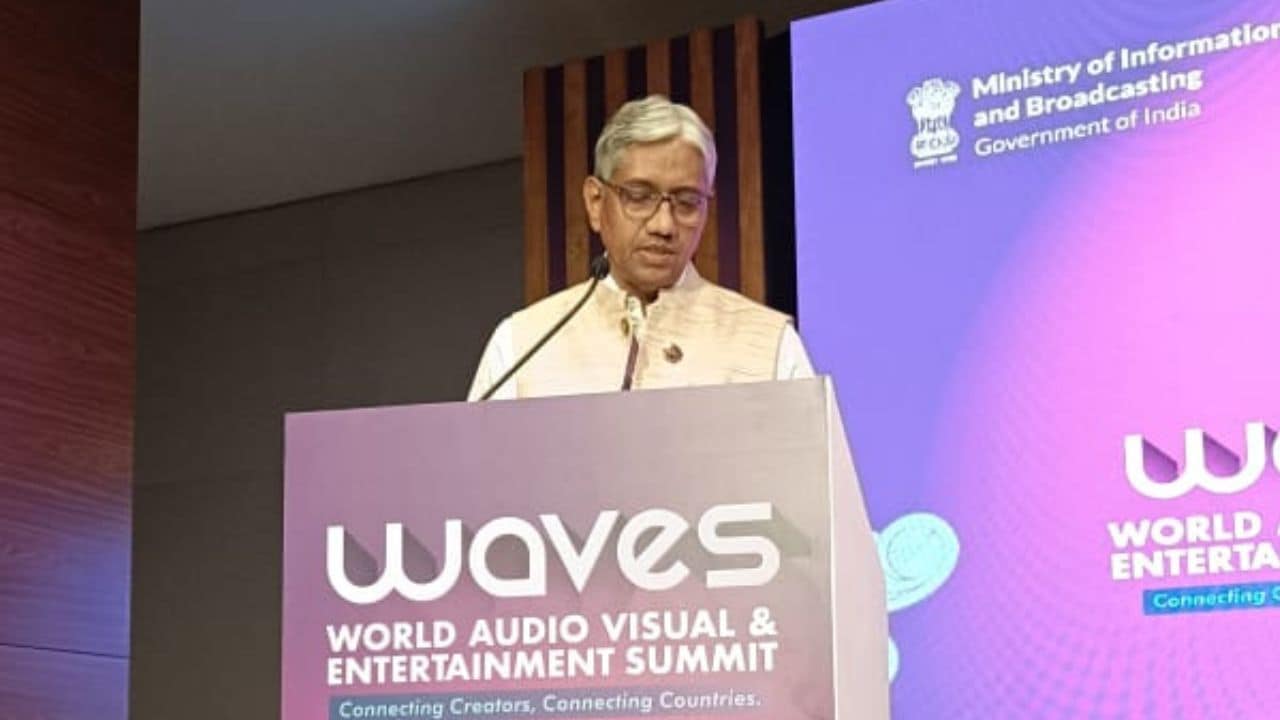As India’s broadcasting landscape transforms with the rapid rise of digital media, Telecom Regulatory Authority of India (TRAI) Chairman Anil Kumar Lahoti has called attention to the growing regulatory imbalance between traditional linear television and digital streaming services. Speaking at the WAVES 2025 on May 1, Lahoti also pointed out how TRAI is working on revamping audience measurement systems to allow multiple agencies and generate more reliable advertising data.
TRAI has been advocating for multiple ratings agencies for audience measurement, as also stated in its recommendations for the National Broadcasting Policy 2024, specifically focusing on television, radio, and OTT services. This approach, according to TRAI, aims to enhance transparency and credibility in audience measurement.
Advertisers and stakeholders, however, have opposed the move in the past, saying ‘it is economically not feasible’ and recommending enhancing the existing mechanism.
Read more: OTT and TV audiences: One measurement system, one currency or multiple currencies?
While TRAI has highlighted concerns regarding the current system’s dependence on a single provider- the Broadcast Audience Research Council (BARC) in the past, it is to be noted that media research firm TAM, a joint venture between Nielsen (USA) and Kantar (UK) had applied for a license as a ratings and audience measurement body with the Ministry of Information and Broadcasting, last year.
In his keynote address, Lahoti also emphasised the importance of maintaining a level playing field for all stakeholders, while ensuring adequate consumer protection and enabling industry growth.
“To regulate the post-digitalisation cable network, TRAI established a comprehensive regulatory framework, with the objective of providing a level playing field for all the stakeholders,” Lahoti said, highlighting TRAI’s role in driving transparency and accountability post-digital switchover. “The idea was to ensure quality of service in this vast ecosystem and to empower the consumer to let them have a freedom of choice in selecting the channels that they want to see.”
While these regulations were initially criticized as excessive, Lahoti defended them as necessary given widespread consumer concerns. He noted that TRAI has since “regularly reviewed this regulation and updated it with the evolving scenario,” including a significant revision in 2024 that was widely welcomed by the distribution sector.
The Shift to Digital
Lahoti pointed out the dramatic shift in India’s media consumption. Digital media surpassed linear television in 2024, with the former touching $9.4 billion in market value, compared to $8 billion for the latter. The growth has been propelled by affordable high-speed internet—India boasts one of the world’s lowest per-GB data costs at just $0.12.
“Digital media offers interactive experience, regional content, personalisation, freedom of time and choice. All this makes significant positives for the digital broadcasting segment. And why not?” he said. However, Lahoti warned this evolution has also raised regulatory concerns. “Are we dealing with linear TV and the digital TV on the same level?” he asked.
Need for Uniform Oversight
Lahoti highlighted three areas of concern: content regulation, competitive parity, and consumer protection.
Linear TV is bound by government-notified programming and advertising codes, but digital platforms are governed by a mix of self-regulation and light-touch policies. “There are concerns being raised regarding the content which is being disseminated,” Lahoti said, pointing to a recent Supreme Court notice issued to the government in response to a PIL on digital content regulation.
He further warned against allowing regulatory frameworks to create market distortions: “We should not be having regulation which creates a disparity.” For consumers too, he noted, the safeguards available under linear TV models—such as price regulation and service standards—are either lacking or inconsistent in digital broadcasting.
Ongoing Efforts and Policy Roadmap
Lahoti outlined TRAI’s ongoing efforts to modernise regulatory frameworks. These include:
-Recommendations under the 2023 Telecommunication Act to simplify and harmonise authorisation across nine types of broadcasting services
-A proposed framework for ground-based broadcasting, allowing wireline and wireless infrastructure to deliver broadcast services
Read more:Mukesh Ambani’s 4-Point Vision to propel India’s M&E industry to $100 Billion
-Eased norms for radio broadcasting, including de-linking licensing and spectrum acquisition
-A push for infrastructure sharing between telecom and broadcast firms to lower costs
-A revamp of audience measurement systems to allow multiple agencies and generate more reliable advertising data
-TRAI has also submitted a comprehensive National Broadcasting Policy to the government, aimed at easing business, promoting local content creation, and safeguarding against piracy.
On the regulatory side, OTT platforms currently fall under the Information Technology Act, with digital media intermediaries governed by the Intermediary Guidelines and Digital Media Ethics Code. While these offer some oversight, Lahoti said, they differ significantly from broadcast codes, especially around content standards.
Read more: It’s the dawn of the Orange Economy: PM Modi at WAVES 2025
In closing, Lahoti acknowledged the complex task regulators face. “Entities who are at the top end of the pyramid would like to have more and more freedom but as we go to the local cable operators or the consumers, the feedback they want more and more regulation,” he said.
“We have to facilitate growth, facilitate innovation, and ensure the consumer gets the best in terms of the technology available. Yet, we have to protect the interests of the consumers, and stakeholders who are otherwise vulnerable.”
